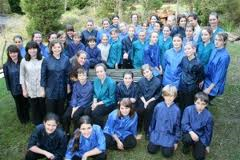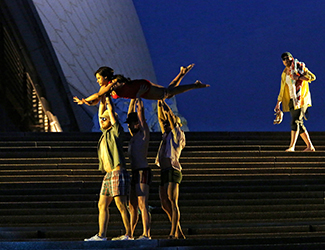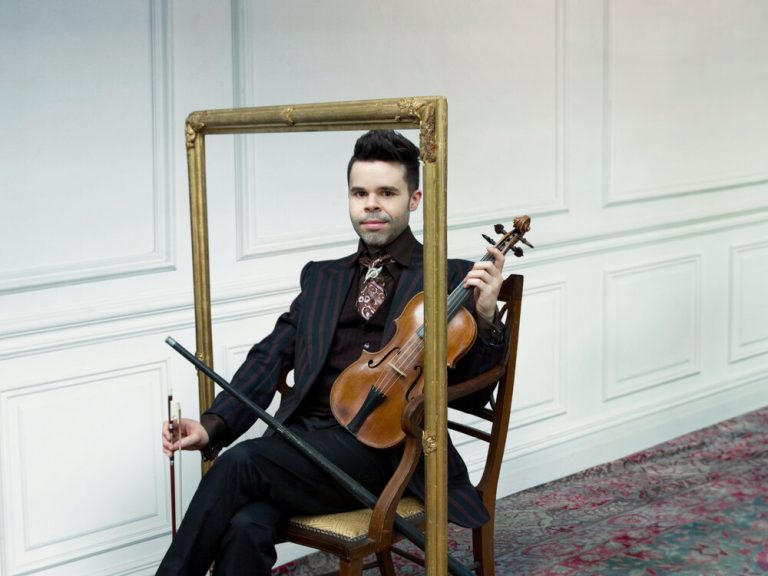José Carbó – ‘My Latin Heart’

It comes from his heart. His Latin heart. Argentinian born Australian baritone José Carbó has recorded a collection of music from Argentina, My Latin Heart, a tribute to his heritage. Accompanying him are guitarist brothers Leonard and Slava Grigoryan. Together they have created a swathe of Latin American songs that blaze, glow, fade to embers and flare again.
Carbó has an international career performing in opera, on disc and in concert. His performances overseas have taken in La Scala, Teatro Real Madrid, Switzerland, Tokyo and New Zealand. In Sydney, and around Australia, too, his career spans the concert stage and opera. He made his debut with Opera Australia 2002. He continues there as a principal and Sydney opera fans can hear him soon in the 2012 winter season when he sings the role of Fritz in Korngold’s Die tote Stadt.
Whilst the techniques from the ‘classical’ tradition underpin Carbó’s singing on My Latin Heart, that aesthetic doesn’t diminish the sincerity and authenticity of his Latin style. For him, the language is instinctive and the music intuitive. He cajoles and teases the words as he plays with rubato and the melodic line. He moves with ease from vulnerable tenderness and controlled beauty, to full blooded power with a gorgeous spectrum of hues in between.
Speaking to Sounds Like Sydney, José Carbó reminisced about his grandfather Donato, who had a powerful influence on his early years. Till he was 5, Carbó was raised mainly by Donato and his wife Nilda. Every morning, Donato played the bandonèon to the young Carbó. “Later’, he continues, ” my father José introduced me to the guitar as soon as he thought my little fingers could make sense of a fret board”. Then came the move to Australia.
As Carbó grew, there were regular family gatherings both in Australia and in Argentina. There might have been a separation from his cultural roots, but always there was music. When Carbó was 26, Donato left Australia for what was to be the last time. In a poignant gesture, and years before any hint of young José’s vocal career, Donato left with his grandson the sheet music from which all the tracks on My Latin Heart were arranged and recorded. Says Carbó “He could not possibly have foreseen the life-changing events which would lead to an eventual recording of those songs. What really astounded us was that the tangos selected from Grandpa’s sheet music were ‘key perfect’ for my voice. It is as if fate ordained that I sing as a baritone – so I could record Grandpa’s tangos one day”.
“The recording”, says Carbó, “is best described as a circle that’s been completed. A circle that my grandfather initiated, through his bandonèon playing. It sowed the seeds of my musical and spiritual growth, bringing to me the conviction that I must record these songs. There is no question about the strength of the vibe and the feeling that gave birth to the project. With the CD, the circle is complete”.
Intensifying the stylistic roots of the music, is Carbó’s ancestry beyond Argentina, which extends to Italy and Spain. Adding some spritz to this mix are the Grigoryan brothers, highly acclaimed guitarists of Russian heritage who have met Carbó’s expectations in being able to “play the tango as well as any Argentine, (and) with as much feeling and passion”.
My Latin Heart has 14 tracks. Amongst them the familiar Amapola by Joseph LaCalle (1860-1937) a native of Cádiz; El Choclo by the Argentinian Ángel Villoldo (1861 – 1919) and Granada by the prolific Mexican song writer Agustin Lara (1897- 1970), who had no formal musical training but who integrated popular songs and traditional rhythms like the habañera, tango and foxtrot into his personal style. Then there’s the not so familiar – Uno, En esta tarde gris and Adios – three songs by Mariano Mores (b 1922), a major influence in Argentine popular music.
Central to the collection is another trio of classics from the man who is single handedly responsible for the recent renaissance in Argentinian music, Astor Piazzolla (1921-1992). Like Donato, Piazzolla was a prolific bandonèon player. When he was 3 Piazzolla’s family emigrated to New York., where as a teenager, he became acquainted with Carlos Gardel (1890-1935). Gardel was a baritone, like Carbó, and a leading figure in the history of the tango. Piazzolla later studied under Ginastera and Boulanger in Paris, where he settled. From this Piazzolla created his own distinctive style of tango, which came to be called nuevo tango. It included elements of fugue and jazz, chromaticism, and dissonance. Incidentally, one of Gardel’s songs El dia que me quieras is in Carbó’s collection.
Carbó says, “Piazzolla will be remembered as one of the greatest innovators of tango. When Slava, Lenny and I contemplated the content for this CD I knew that without a significant representation of Piazzolla, I would not be telling the whole story. Of all the music by Piazzolla that I listened to, I chose three songs that I thought were the most accessible – Ave Maria, Los pajaros perdidos and Oblivion (with French text). Piazzolla is to the tango, what Prokofiev was to classical music. He was a master of rhythm. He took the emotion within the rhythm – Milonga and other forms – and blended it to create his own style littered with classical motifs influenced by the culture and the land”.
Affirming the adage that great talent is born, not made, Carbó’s singing meandered along the path of self direction until his mid-30’s. In those years he says he simply listened very carefully, watched and emulated what he heard and saw. His heroes were the greats – Mario del Monaco, Beniamino Gigli, Franco Corelli, Tito Schipa, Jussi Björling and Ettore Bastianini. “They all had superlative technique. It’s very interesting – Bastianini did not sound the same on record as he did ‘live’. Even allowing for the limitations of recording technology at the time, he was far better ‘live’ than in studio”. Which brings us to the process of his own recording.
If Bastianini sounded better ‘live’ than on vinyl, can the recording studio turn the tables and make an artist sound better on disc than in performance? Carbó disagrees most decidedly. “Wearing the ‘cans’ (earphones) kills everything that is beautiful in sound. It takes away the sense of the room and the elements that you rely on for pitch and dynamics that have been built over decades. What the singer hears is just a digital representation of his voice. When I sing on stage, I can feel the energy of the audience as I put on my make-up! The recording studio is a vacuum and you can only draw from yourself.” With a little help from Donato.
Shamistha de Soysa for Sounds Like Sydney, June 2012.
My Latin Heart is out on ABC Classics, catalogue number ABC 476 4833






